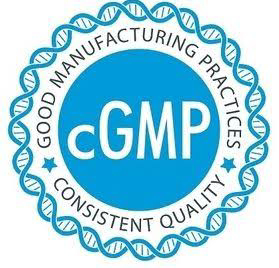Preamble:
Lyophilizers, also known as freeze dryers, are vital equipment used in various industries such as pharmaceuticals, biotechnology, food processing, and research laboratories.
They play a crucial role in removing moisture from delicate substances while preserving their structure and properties.
In this article, we will explore the key aspects of lyophilizers, addressing questions regarding what they are, why they are used, which industries benefit from them, when to employ them, where they are commonly found, and how they operate.
1. What is a Lyophilizer?
A lyophilizer is a specialized piece of equipment designed to remove moisture from substances through the process of freeze-drying.
It involves freezing the material and then subjecting it to a vacuum, allowing the frozen water to sublime directly from ice to vapor without passing through the liquid phase.
The result is a dry, lightweight, and stable product that can be stored for extended periods without degradation.
2. Why are Lyophilizers Used?
The primary purpose of lyophilizers is to preserve the integrity of heat-sensitive or delicate materials during the drying process.
By removing moisture under low temperatures and vacuum conditions, lyophilization prevents chemical reactions, microbial growth, and other forms of degradation that can occur with traditional drying methods.
It helps retain the material's original structure, texture, color, and bioactive properties, making it ideal for preserving pharmaceuticals, biological samples, enzymes, vaccines, and even gourmet foods.
3. How do Lyophilizers Work?
The lyophilization process involves the following steps:
A. Pre-freezing:
Before entering the lyophilizer, the material to be dried is pre-frozen to a temperature below its eutectic point.
This step is crucial to solidify the water within the material and prepare it for subsequent drying.
B. Primary Drying (Sublimation):
Once the material is pre-frozen, heat is applied to the shelves or trays containing the material, causing the ice within the frozen material to undergo sublimation.
Sublimation is the direct transition of ice from a solid state to a vapor without passing through the liquid phase. This process is driven by the pressure difference between the frozen material and the vacuum within the chamber.
During sublimation, the water vapor formed moves away from the frozen material and is captured by the condenser, which is typically kept at a lower temperature.
The condenser helps to convert the water vapor back into ice, preventing it from re-entering the drying chamber. This step continues until most of the ice within the material has sublimed.
C. Secondary Drying (Desorption):
Once the primary drying phase is complete, there is typically some residual moisture left within the material.
The secondary drying phase aims to remove this residual moisture by slightly increasing the temperature of the material.
This elevated temperature promotes desorption, which is the process of removing the remaining water molecules bound to the material's structure. The desorbed water vapor is then captured by the condenser and removed from the system.
D. End Point Determination:
Determining the end point of the drying process is critical to ensure the desired moisture content is achieved in the final product.
This is typically done by monitoring parameters such as temperature, pressure, and the rate of water vapor removal.
Various techniques, including thermocouples, pressure sensors, and moisture analyzers, can be used to assess the progress of drying and determine when the material has reached the desired moisture level.
E. Sealing and Storage:
Once the lyophilization process is complete and the material has reached the desired moisture content, it is typically sealed in moisture-resistant containers, such as vials or ampoules.
This sealing step helps maintain the stability and integrity of the dried product, preventing reabsorption of moisture from the surrounding environment. Proper sealing is crucial to ensure the long-term preservation and quality of the lyophilized material.
It's important to note that the lyophilization process can be complex and requires careful optimization of various parameters, including temperature, pressure, drying time, and formulation characteristics, to achieve the desired results. Each step must be meticulously controlled to ensure the preservation of the material's properties and to obtain a high-quality lyophilized product.
4. Which Industries Benefit from Lyophilizers?
Lyophilizers find extensive applications across various industries, including:
A) Pharmaceutical and Biotechnology:
Lyophilization is a common technique used to stabilize and extend the shelf life of drugs, vaccines, antibodies, and other biological products. It facilitates easier storage, transportation, and reconstitution of these sensitive substances.
B) Food Processing:
Freeze-drying is employed in the food industry to preserve perishable items like fruits, vegetables, coffee, and meat. This process allows for long-term storage while retaining the nutritional value, taste, and appearance of the food.
C) Research and Development: Laboratories and research institutions utilize lyophilizers to preserve biological samples, cell cultures, enzymes, and other valuable materials for future experiments or analysis.
D) Cosmetics and Skincare: Lyophilization plays a role in the formulation and preservation of cosmetic products, such as creams, serums, and masks, where stability and prolonged shelf life are essential.
5. When to Use Lyophilizers?
Lyophilization is recommended in situations where traditional drying methods, such as air drying or spray drying, may cause degradation or loss of product quality.
It is particularly beneficial for substances that are heat-sensitive, prone to oxidation, or require extended storage periods without the need for refrigeration. Additionally, when rapid reconstitution is desired, lyophilized products offer faster dissolution compared to other dried forms.
6. Where are Lyophilizers Commonly Found?
Lyophilizers are found in various settings, including pharmaceutical manufacturing facilities, research laboratories, biotechnology companies, food processing plants, and even in the production of specialty products like instant coffee.
These machines can be both large-scale industrial units or smaller benchtop models, depending on the specific application and quantity of material to be processed.
Inference:
Lyophilizers or freeze dryers, are indispensable tools in industries that require the preservation of sensitive materials with minimal degradation.
They provide a reliable method for removing moisture from substances while retaining their structural integrity, shelf life, and functionality. From pharmaceuticals and biotechnology to food processing and research laboratories, lyophilizers find widespread use in diverse applications.
About the Author:
Dhansukh Viradiya is a highly accomplished expert in the pharmaceutical and biopharmaceutical industries. With over 10 years of experience in the field, he has gained comprehensive knowledge and expertise in various areas, including Process Validation, Cleaning Validation, Quality Management System, In-process quality assurance, Qualification etc.
Mr. Dhansukh holds a Master's degree in Pharmacy from a renowned University, where he specialized in Quality Assurance.
As a thought leader, Mr. Dhansukh has published numerous articles and white papers on various topics related to pharmaceutical and biopharmaceutical industries. His research work focuses on emerging trends, current regulatory expectations, advancements in technology, personalized medicine, and the intersection of healthcare and technology.
With his passion for improving patient care and dedication to advancing the field, Dhansukh Viradiya continues to make significant contributions to the pharmaceutical and biopharmaceutical industries. His insights and expertise make him a valuable resource in understanding the dynamic landscape of these sectors and their impact on global healthcare.
Disclaimer:
The author's biography is provided for informational purposes only and does not imply any endorsement or affiliation with the article or its content.
Bye value added Grocery products on Amazon by clicking on below link 💌














No comments:
Post a Comment